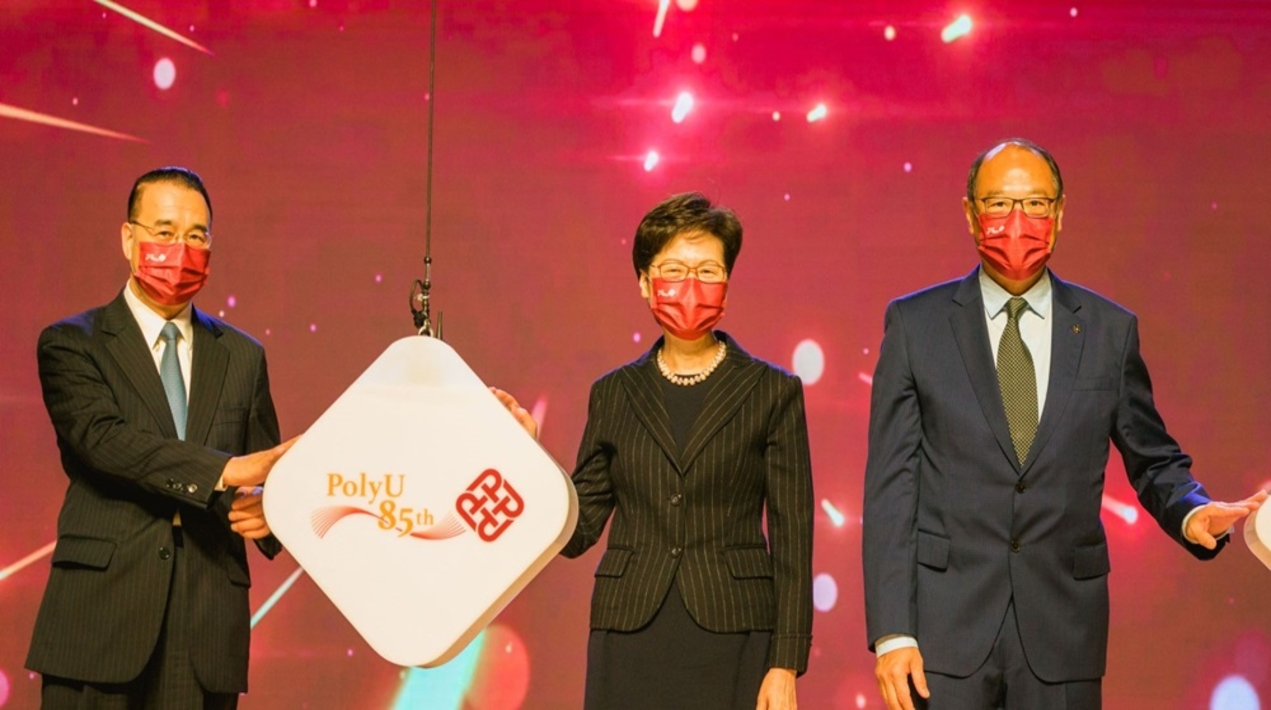
The 85th Anniversary of The Hong Kong Polytechnic University (PolyU) was recently held. Under the theme of “We Are PolyU • Together We Excel”, more than 600 distinguished guests, alumni, staff and students attended the occasion, which shared the accomplishments the University had made over the years and paid tribute to its supporters.
The milestone also represents a time when PolyU is embarking on a new journey aiming to strengthen its position as a leading university with world-class education and research, help Hong Kong shine as a leading innovation and technology hub, and further contribute to a better and more prosperous future for the Nation and the world.
Among the new initiatives in the years to come, the recently established PolyU Academy for Interdisciplinary Research (PAIR) will spearhead the University’s interdisciplinary research efforts in cutting-edge areas such as artificial intelligence, carbon neutrality, deep space exploration, smart cities, and smart energy. PolyU will also launch new education programmes in emerging technologies to meet the needs of society for interdisciplinary talents while continuing to work together with the Government, the University Grants Committee and other key partners to nurture the next generation of socially responsible leaders.
The University will further promote and support entrepreneurship through education, seed funding programmes and the “GBA PolyVentures 2025” initiative in partnership with industries and investors to help translate PolyU’s research outcomes into real-world impact.
Other highlights of the celebration in the coming months include the publication of a book on PolyU’s history; the opening of a University history museum; the enhancement of the southern entrance at Core A as the University’s main entrance; and the hosting of an innovation and technology day.
Speaking at the launch ceremony, the Chief Executive of the Hong Kong Special Administrative Region stated that PolyU has become a global powerhouse in university education and continues to attract gifted innovation and technology academics from around the world. The Chief Executive added that she fully supported the University’s initiatives to nurture innovation and technology talents and help young entrepreneurs to thrive in the GBA. Regarding PolyU’s plan to establish a new campus in Foshan, Guangdong.
The Chairman of the University Grants Committee stated that PolyU had delivered a wide array of research outputs with a positive impact on society. The latest Research Assessment Exercise rated 70% of PolyU’s research as “world-leading” or “internationally excellent”. He noted that everyone is proud of how the Surface Sampling and Packing System developed by PolyU played a vital part in the Nation’s first lunar sample return mission.
The Council Chairman of PolyU stated that PolyU had nurtured more than 400,000 alumni, empowering the development of Hong Kong. He said, “PolyU will continue to work together with the Government and support Hong Kong’s integration into the Nation’s development, develop Hong Kong into an international innovation and technology hub, and make greater contributions to Hong Kong, the GBA and the Nation.”
Meanwhile, the President of PolyU stated that the University is committed to enhancing the long-term competitiveness of Hong Kong and the Greater Bay Area at the international level.
















